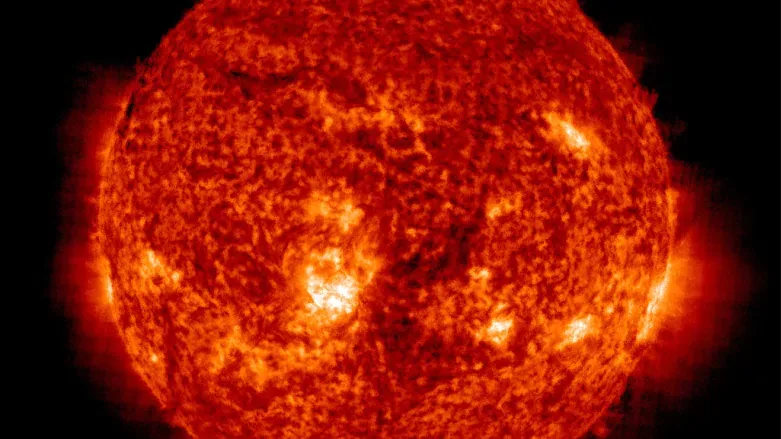
The sun is quieter than normal, but don't panic
The sun is quiet … very quiet.
In February, for the first time since August 2008, the sun went an entire month without any sunspots.
Sunspots are cooler regions of the sun. How many appear on the sun's surface depends on what cycle the sun is in. Every 11 years our star goes through a maximum, followed by a minimum (the entire magnetic cycle of the sun, when the poles flip, is 22 years).
Over the past three decades, the sun has been consistently dropping in activity. Maximum has been quieter than is typical; minimum has been particularly quiet. And this has caused some to make the false assumption that, as a result, Earth is going to cool.
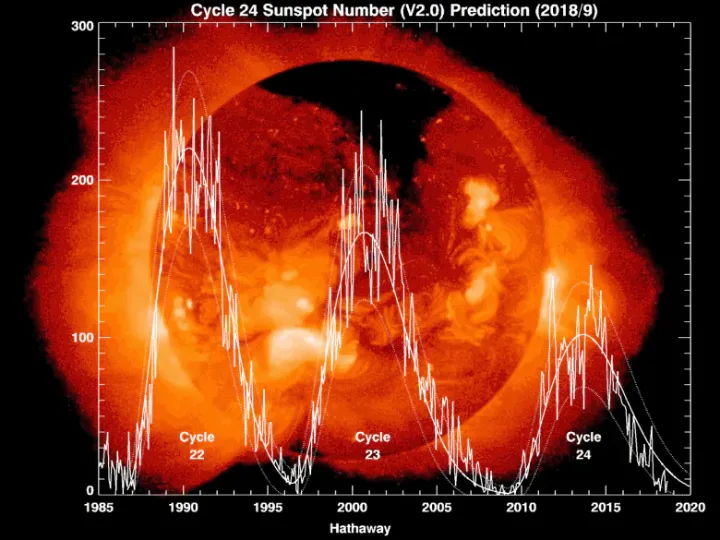
This graph shows the decrease in solar activity over the past 33 years. (David Hathaway)
It all stems from an incident that took place between 1645 and 1715, called the Maunder Minimum, where sunspots all but disappeared. This coincided with the "Little Ice Age" that stretched from 1500 to 1850 in the northern hemisphere. In England, the Thames River froze over; Viking settlers abandoned Greenland.
As a result, there have been strong suggestions that the Maunder Minimum caused the Little Ice Age, but some scientists warn that there were other contributors, such as increased volcanic activity.
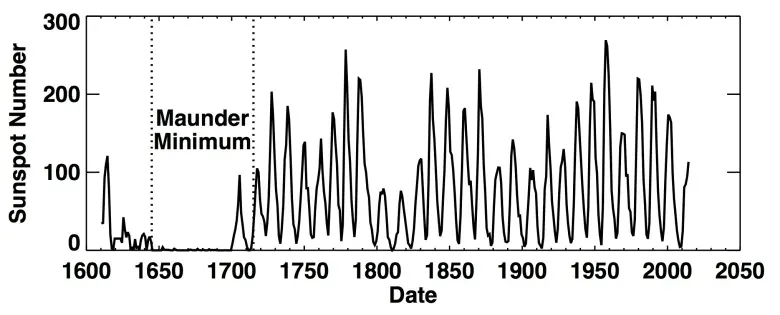
This graph illustrates solar activity over the past four centuries. The Maunder Minimum is evident.
On average, the sun produces 180 sunspots a cycle. The greatest ever was 285 in solar cycle 19; for solar cycle 24, so far it's been 116.
So, with the decrease in solar activity, are we heading into another Maunder Minimum?
"No Maunder Minimum. Certainly no Little Ice Age," said David Hathaway, an astrophysicist who once headed NASA's solar physics branch at the Marshall Space Flight Center. "The next cycle looks like it's going to be very much like this one."
He explains that, while the sun does dim during a minimum, it's only by a tenth of a per cent, which translates into a tenth of a degree Celsius. And with the warming by about 1C that we've seen due to climate change — and the warming that is to come — it's unlikely that we'll notice.
DIFFERENT CYCLES
The sunspot cycle is also called the Schwabe cycle. At the moment we are at the end of cycle 24, heading toward 25. And scientists predict that this quiet trend is going to persist.
"There's been this steady decline," Hathaway said. "I'm fairly confident looking at our own predictions and predictions of others, that cycle 25 is going to be another small cycle."
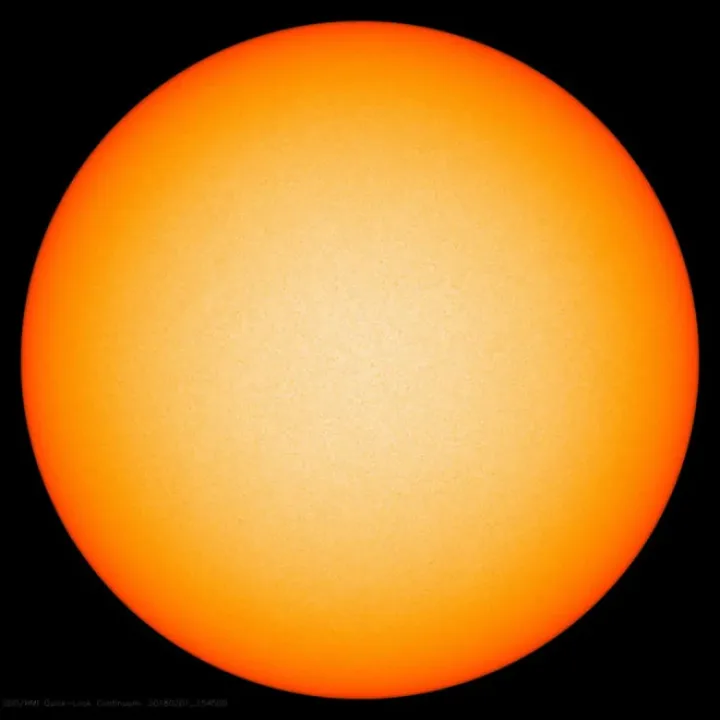
The sun had no sunspots for the entire month, a sign of an approaching period of solar minimum next year, when the sun's activity will be at the low end of its 11-year cycle. (Solar Dynamics Observatory, NASA)
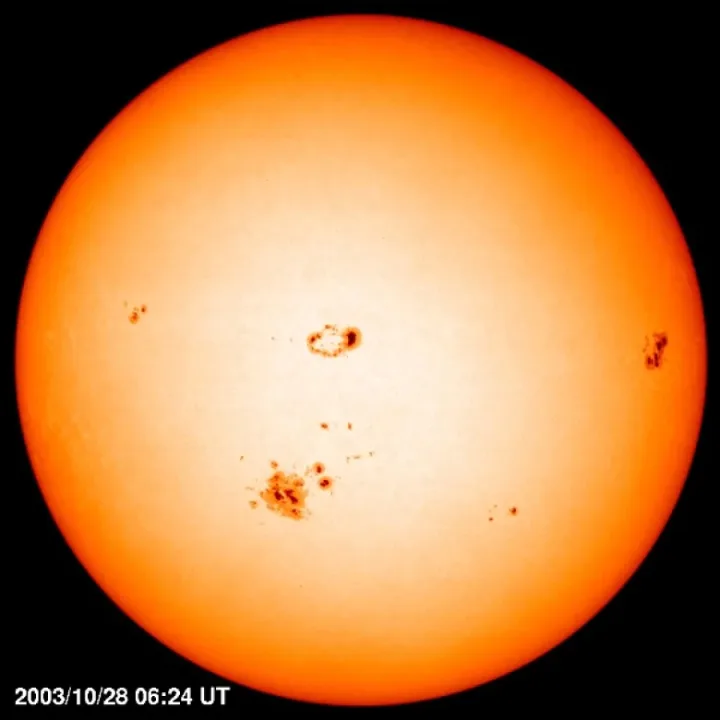
Sunspots dot the sun's surface, or photosphere. The sunspot unleashed a spectacular show on Oct. 28, 2003. This sunspot released one of the biggest solar flares ever recorded. (Solar and Heliospheric Observatory, NASA)
But it's believed that the sun goes through many different cycles. Aside from the Schwabe, there is also one called the Gleissberg Cycle, where solar activity decreases roughly every 90 years.
And Hathaway said data over the past two centuries suggests that what the sun is now going through may be part of this cycle.
"We've now seen three or four of these modulations where we have small cycles, then they get bigger and then they get smaller again," he said. "We're at that bottom phase, where we haven't seen cycles this small in 100 years."
WHY WE SHOULD CARE
Though we hardly take notice of the sun on a day-to-day basis, that blazing, seemingly idle object is incredibly active: It is continually fusing hydrogen into helium and it will continue to do so for another five billion years or so.
And it plays an important role in our day-to-day lives, more so than just providing the sunlight needed for life to thrive.
This NASA video illustrates solar activity with eruptions and flares on its surface.
Here are just a few things that can be affected by the sun's activity:
GPS satellites.
Television satellites.
Power grids.
The health of astronauts.
"We have people living in space and a huge number of satellites that live in space and they're constantly bombarded by things from the sun that can degrade them or damage them," said Dean Pesnell, astrophysicist with NASA's Goddard Space Flight Center's heliophysics science division. "Also the Earth's atmosphere responds to solar activity by causing the stuff that's in orbit around the Earth to fall out of orbit."
And we've seen it happen before in spectacular fashion.
During a solar maximum, Earth's upper atmosphere responds by heating, which causes it to swell. This can cause atmospheric drag on satellites. If they are not stabilized, they experience something called orbital decay, and eventually return to Earth. In most cases, the debris will burn up in the atmosphere.
But in 1979, Skylab — the first American space station — fell victim to just this sort of thing. An increase of solar activity caused the 77-tonne station to re-enter. The problem was, not all of it burned up — a large piece hit an unpopulated area in Australia's outback.
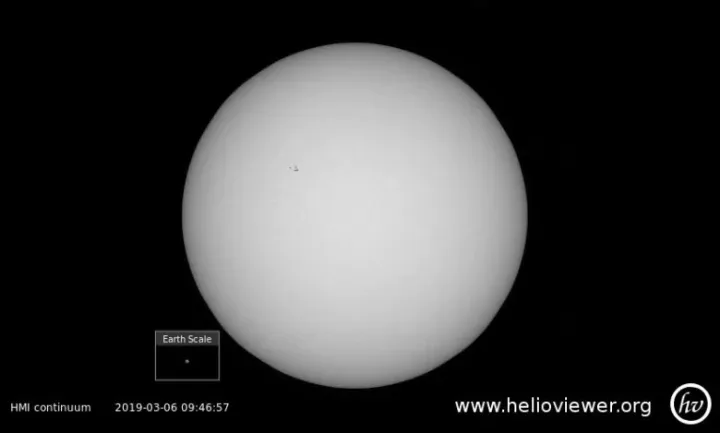
This image shows a tiny sunspot on the surface of the sun on March 7. (Helioviewer/NASA/SDO)
Hathaway said that he's probably seen thousands of satellites drop out of space as a result of solar activity causing drag.
"Skylab really opened up our eyes," Pesnell said.
Since then, there has been an increase in missions to study our star, including the Solar Dynamics Observatory, Solar and Heliospheric Observatory, Hinode and the recently launched Parker Solar Probe.
SO, ARE WE IN A MINIMUM?
When astrophysicists talk about solar minimum, they're not referring to the quietest time on the sun, but rather to the sun coming out of its quiet time and and starting a new cycle.
Though February went without a sunspot, a tiny one appeared on March 5. However, it wasn't a sunspot that was part of the coming cycle.
Sunspots are magnetic and have both a north and south pole. One sign that a sunspot is part of a new cycle has to do how the magnetic field lines connect and this sunspot connects in the same pattern as the current cycle.
The sun doesn't rotate as a solid sphere. Instead, different parts of it rotate at different speeds. As a result, the magnetic field lines are stretched out. The magnetic field of the next cycle, instead being north-south would become east-west.
As well, there's the location.
"To be a cycle 25 spot, it's apt to appear at about 30 degrees latitude, Hathaway said. "This was at nine [degrees]. So this was definitely old-cycle."
However, both Hathaway and Pesnell believe that solar cycle 25 should begin some time in 2020.
And when that happens, sunspot activity will increase. And as activity increases, we are almost certain to see more solar flares and coronal mass ejections, eruptions from the sun. While these eruptions are responsible for our beautiful northern lights, they can also cause power outages as was seen in Quebec in March 1989.
While Hathaway is officially retired, he continues to monitor our nearest star, to unravel its mysteries and better understand its effects on Earth.
"I continue to strive to understand this beast," Hathaway said.
This article wsa originally published by CBC News and written by Senior Science Reporter, Nicole Mortillaro